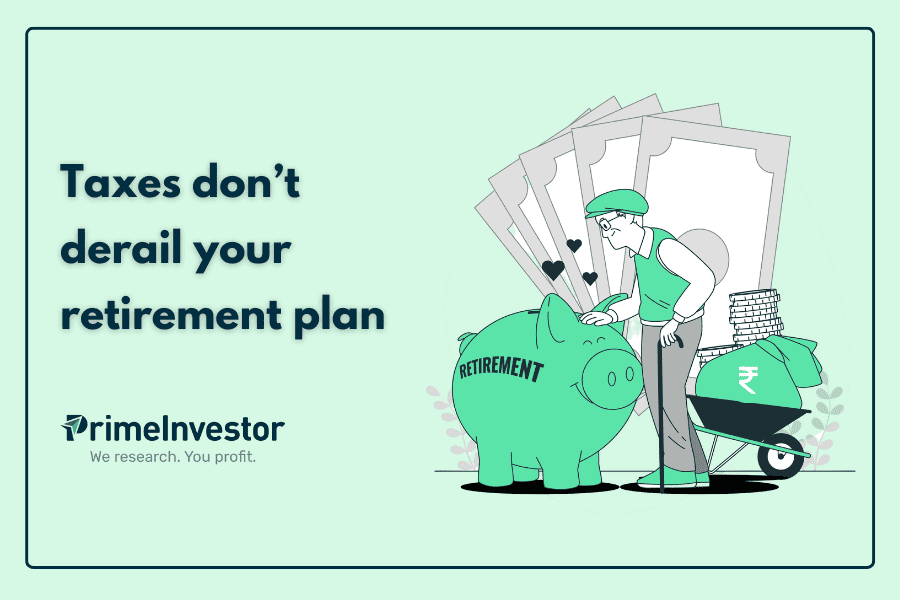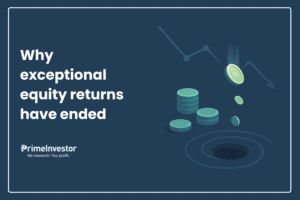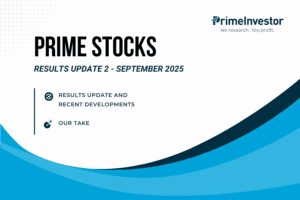For most of the 21st century, mutual funds enjoyed favourable tax treatment in India. Long-term equity capital gains were tax-free, while long-term debt capital gains were taxed at 20% with indexation, significantly reducing the tax burden.

However, this changed in recent years. First, long-term equity capital gains became taxable at 10%, later increased to 12.5%. Then, the taxation on debt funds was overhauled – all capital gains are now treated as earned income and taxed at slab rates.
These developments have led to a pressing question: Should retirees opt for different asset classes or change their asset allocation to account for the change in taxation? While retirement planning is highly individual-specific, we conducted a simple analysis using a basic accumulation and withdrawal model to gauge how much taxes impact a sample retirement portfolio. We found that their impact may not be as big as feared.
What we did
We analysed the portfolio of an investor with a mix of equity, debt and cash, over a 25-year period from 2001 to 2025. The first 10 years (2001–2010) represented the accumulation phase (when he was investing towards retirement), and the next 15 years (2011–2025) covered the withdrawal phase (when he was taking out money from his portfolio after retirement).
As in a typical retirement portfolio, we assumed he held three asset classes: Equity, Debt, and Cash. While long term index data for equity was available, we used 2 mutual funds with sufficiently long history to represent the Debt and Cash part of the portfolio. The actual returns on these three instruments from 2001 to 2025 were considered to simulate the behaviour of the portfolio. Here are the instruments we used.
- Equity: Nifty 500 TRI index
- Debt: SBI Magnum Gilt Fund – Growth
- Cash: HDFC Liquid Fund – Growth
We assumed that during the accumulation phase, he followed an 80:20 Equity:Debt allocation. By the withdrawal phase, he gradually transitioned to a 60:25:15 Equity:Debt:Cash mix.
During the investment period, rebalancing was done primarily through fresh investments to avoid redemptions. For instance, if the equity portion exceeded the target allocation, the fresh investment was made in debt and cash to bring equity exposure down. (You can refer to our Portfolio Rebalancing Calculator for details on this method.)
During the withdrawal phase, a single annual withdrawal was made on January 1st each year, starting in 2011 (to keep it simple). This withdrawal also served as a rebalancing opportunity to bring the post-withdrawal allocation back to target.
To isolate the impact of taxation, we kept the out-of-pocket cashflows constant. That means:
- During the accumulation phase, capital gains tax was sometimes incurred on redeeming assets to rebalance the portfolio. We deducted this tax outgo from the intended investment. For example, if the planned investment was Rs.4 lakh and the tax payable was Rs.1 lakh, only Rs.3 lakh was invested that year.
- During the withdrawal phase, the tax was withdrawn on top of the planned amount. So, if the intended withdrawal was Rs.7 lakh and Rs.1 lakh was due as tax, we pegged the total redemption at Rs.8 lakh.
Tax Assumptions
The following capital gains tax rates were used for the analysis:
- Equity
- Short-term gains: 20% + cess
- Long-term gains: 15% + cess, applicable beyond Rs.1.25 lakh in gains per year. We kept it higher to account for any tax increase in the future.
- Short-term gains: 20% + cess
- Debt
- Accumulation phase: All gains taxed at 30% + cess
- Withdrawal phase: Gains taxed at the applicable slab rate (assuming no other income)
All calculations were done under the new tax regime. To highlight the impact of taxation, we present the performance of the portfolio without factoring in taxes and compare it to a portfolio where taxes were charged. We took two cases of withdrawing Rs 6 lakh annually and Rs 12 lakh annually.
Case 1: Withdrawing Rs.6 lakh annually
We assumed annual investments of Rs.4 lakh from 2001 to 2010. By 2010, after ten years of investing, the portfolio without tax impact (let’s call it the tax-free portfolio) had grown to Rs.1.2 crore, while the portfolio with tax had reached Rs.1.14 crore.
Withdrawals from both portfolios started in 2011 at Rs.6 lakh, increasing by 5% annually thereafter. In the first year, this withdrawal was 4.98% of the 2010 corpus for the tax-free portfolio, and 5.27% for the taxed portfolio. The difference shows the extent to which taxation impacted the accumulated corpus and thus the withdrawal rate.
For the first seven years, this investor did not face any tax outgo on rebalancing as fresh investments were sufficient to bring the portfolio back to his preferred asset allocation. However, starting in 2008, redemptions faced substantial tax outgo. This began to reduce the net investible corpus. During the withdrawal phase, tax impact was higher in years following strong equity rallies, while it remained modest otherwise.
As of January 1, 2025, the no-tax portfolio had a balance of Rs.3.44 crore, while the taxed portfolio stood at Rs.2.27 crore. Though the taxed portfolio started at about 95% of the tax-free portfolio value, the gap widened over time and this portfolio ended up at 66%.
This is expected, as taxes reduce the effective compounding rate, eating into the accumulated corpus.
How withdrawal rates evolved
We defined the withdrawal rate as the planned cash withdrawal for the next year as a percentage of the current year’s corpus. A lower rate indicates higher sustainability of the portfolio to meet future redemptions.
The tax-free portfolio’s withdrawal rate steadily fell and dropped well below 4%.
In the taxable portfolio, the withdrawal rate remained between 5% and 6% most of the time. While there was a brief spell where the withdrawal rate moved slightly above 6%, this moderated and then stabilised.The planned withdrawal of Rs.12.47 lakh for 2026, on a corpus of Rs.2.27 crore as of 2025, results in a withdrawal rate of 5.5%. Therefore, even with the tax outgo, the withdrawal rate is well within a reasonable range and shouldn’t cause anxiety.
Of course, the actual withdrawal rate that works for you will depend on your asset allocation, returns, inflation and income assumptions etc. The 5% arrived at here works best for our assumed portfolio and withdrawals and is not a universal withdrawal rate applicable for all.
Case 2: Withdrawing Rs.12 lakh annually
We drew up a second scenario to assess whether high-value portfolios saw a more disproportionate impact from taxes. Here, we doubled the annual investment to Rs.8 lakh from 2001 to 2010. By 2010, the tax-free portfolio had grown to Rs.2.41 crore, while the taxed portfolio stood at Rs.2.27 crore.
Withdrawals started at Rs.12 lakh in 2011, increasing 5% annually thereafter. The initial withdrawal was 4.98% of the corpus for the tax-free portfolio and 5.28% for the taxed portfolio — similar to Case 1.
The trend remained similar to Case 1, but the higher nominal capital gains led to larger tax outflows. This is because the exemption on long-term equity gains (Rs.1.25 lakh) remained fixed in both cases, even as gains increased.
As of January 1, 2025, the tax-free portfolio had grown to Rs.6.88 crore, while the taxed portfolio had Rs.4.45 crore. The taxed corpus started at about 94.2% of the tax-free value and ended at 64.6%. While this difference is slightly higher than in Case 1, it is not significant.
Withdrawal rates in Case 2 mirrored those in Case 1. The planned withdrawal of Rs.24.95 lakh for 2026, on a corpus of Rs.4.45 crore as of 2025, results in a withdrawal rate of 5.61% – an increase from the starting 5.28% for the taxed portfolio. As with the previous case, the trajectory shows a brief spike followed by stabilization. This also shouldn’t raise any alarms.
The tax free portfolio’s withdrawal rates are exactly the same as that in Case 1, steadily trending downwards to sub 4%.
More Observations
(Refer to the attached sheet “Detailed data.xlsx” for further data.) ![]()
All equity gains are long-term: All capital gains in our analysis qualify for long-term taxation, as redemptions of units happened well beyond the one-year holding period.
Rs 12 lakh rebate to the rescue: During the withdrawal phase, all tax liability in this portfolio arose from equity capital gains. Even when annual withdrawals reached Rs.20 lakh or more (in Case 2), the capital gains from debt and liquid funds never crossed the Rs.12 lakh threshold – above which earned income becomes taxable under the new tax regime. This kept overall tax outgo lower than feared.
Higher corpus doesn’t raise tax incidence: While fixed exemptions on equity gains and slab-based taxation on debt might suggest that larger portfolios face a higher effective tax rate, our observations indicate that the impact is not substantial – at least when annual withdrawals remain below Rs.25 lakh. Therefore, retirees should not scale down their passive income targets just to avoid taxation.
Equity redemptions are almost always taxable: Equity tends to outperform debt and cash over the long term, causing equity units to remain longest when redeeming from an asset allocated portfolio. As a result, capital gains make up a large portion – often 90% or more – of any equity redemption. This means even modest redemptions (say Rs.2 lakh) can push capital gains above the Rs.1.25 lakh exemption limit, triggering taxation.
Conclusion
Taxes do impact retirement plans – but the effect is not catastrophic. A practical way to mitigate this is to plan for an additional 10–20% of starting corpus to cover potential tax outflows. This could mean saving a bit more each year, postponing retirement by a year or two, or combining both approaches.
While planning for the long term under evolving tax rules can be tricky, certain trends are predictable. For instance, while the long-term capital gains tax on equity (currently 12.5%) may rise in the future, thresholds such as the Rs.1.25 lakh exemption on equity gains, the Rs.4 lakh zero-tax income limit, and the limit of Rs.12 lakh tax free income with rebate are also likely to increase, which would benefit retirees.
The most important takeaway of this analysis though is that tax treatment shouldn’t dictate your choice of products or asset allocation in retirement planning. In our example, debt funds actually turned out to be more tax-efficient during the withdrawal period as mentioned above even with their unfriendly tax structure. And equity funds, despite resulting in high tax outgo, still delivered better returns. A sound retirement portfolio should be able to support rising withdrawals to keep pace with inflation. Without a return-generating asset like equity, it becomes difficult to sustain withdrawals over longer retirement periods.




8 thoughts on “Taxes don’t derail your retirement plan”
Nice article Bipin. Please help me with the following question: I am retired and have a large chunk invested in debt funds (before 2023) and the idea was to withdraw it every year with minimal taxation burden (20% with indexation). But with recent changes, I am not able to take advantage of slab income advantage for my withdrawls (since most of my investment is pre 2023, and will be taxed at 12.5%). I maintain a 55(debt)-45(equity) asset allocation and age is 55. 1. Should I slowly redeem my pre-2023 investments and reinvest them again in debt funds to gain from slab income advantage ? 2. Any equity that I redeem now for rebalancing, should I put it in ICICI short term vs Kotak equity savings vs PPFAS Dynamic asset allocation Vs conservative hybrid – from a 5 year persepective ? Thanks.
Hello Sir,
As we are SEBI-registered Research Analysts, we are not permitted to offer one-on-one financial planning. Hence, the following comments are general in nature. You are advised to consult a fee-based financial advisor to tailor your investment strategy to your specific needs and tax situation.
Regarding whether to redeem and reinvest in debt funds to save tax; this may or may not be beneficial depending on your investment duration and the expected tax slab at the time of final redemption. This decision should ideally be made on a case-by-case basis. In short, if you plan to redeem the existing debt funds within a short period (a few years), continuing to hold them may be preferable. However, if your holding period is longer and you expect to fall under a 0% tax bracket at the time of redemption, switching could be a better option.
Hybrid funds are not a substitute for debt funds. Investing in hybrid funds instead of debt funds as part of rebalancing will alter your asset allocation, since hybrid funds have an equity component. You may refer to the community post below for more details on this topic.
https://community.primeinvestor.in/c/ask-your-mf-questions-74d06e/views-on-parag-parikh-daaf
Best regards
One needs to have diversification into assets along with equity and debt, for eg Gold,. a scenario where the market crashes just as someone nears his retirement age can psychologically impact an investor. Diversification into gold can help someone face the equity volatility better.
Thank you Sir, for this excellent analysis.
>> This is expected, as taxes reduce the effective compounding rate, eating into the accumulated corpus.
To me, this is the hammer blow. Regardless of how well we common people plan & save, an uptick in tax rate will erode our savings . And there is always a upward trend in taxes. Sad.
Wonderful Work Thank You . This is a very useful analysis. Will having an Aggressive Hybrid fund reduce tax liability during withdrawal stage (one may save tax on rebalancing) or was there no need for rebalancing during withdrawal in this analysis (meaning portfolio post withdrawal was within the asset allocation range).
Hello Sir,
Thank you!
It is hard to comment on the potential tax impact of using an aggressive hybrid fund without a thorough analysis. A few points to consider:
Best regards
Wonderful reply. Key point in the reply was impact of withdrawing when equity is unfavorable. Thank You, think this is the key / essence.
🙏